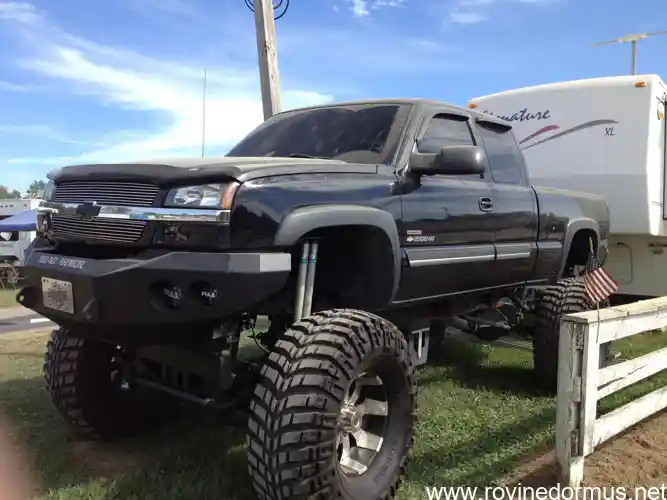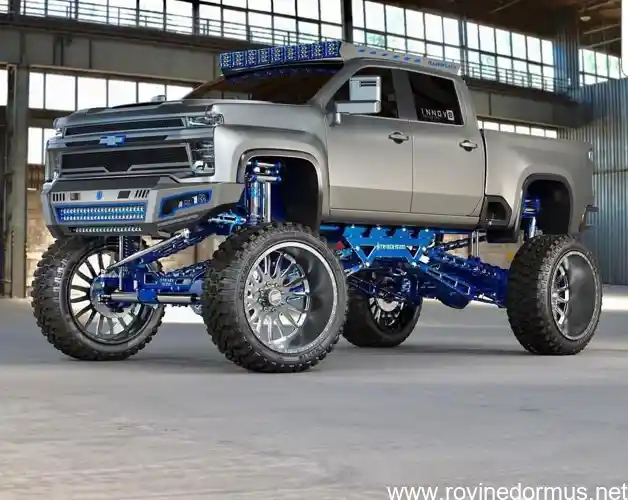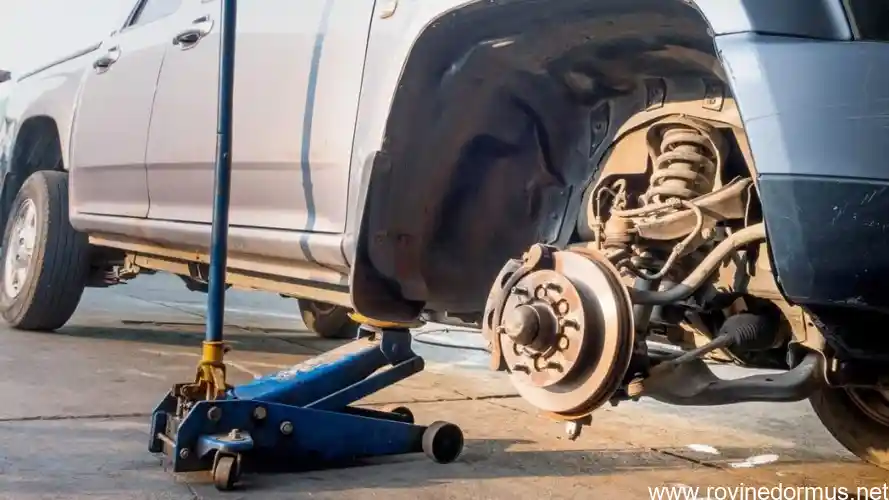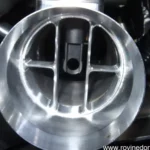Embark on a Comprehensive Guide to Truck Jacking: Ensuring Safety, Precision, and EfficiencyMastering the art of truck jacking is crucial for vehicle maintenance, repairs, and emergency situations. This comprehensive guide provides an in-depth exploration of truck jacking, empowering you with the knowledge and techniques to perform the task safely and effectively.We delve into the various types of vehicle jacks, highlighting their advantages and limitations. We thoroughly assess the potential risks associated with truck jacking, equipping you with the necessary precautions to mitigate hazards.Safety remains paramount throughout this guide. We emphasize the importance of establishing a stable and level work surface and utilizing wheel chocks for enhanced stability. Our step-by-step instructions meticulously guide you through the truck jacking process, from positioning the jack for maximum support to lowering the vehicle safely and securely.To ensure a seamless experience, we anticipate and address common challenges that may arise during truck jacking. We provide solutions for overcoming uneven surfaces and obstacles, handling hydraulic failure and leakage, and resolving truck instability and movement.By equipping yourself with the knowledge and techniques outlined in this guide, you gain the confidence to tackle truck jacking tasks with precision, efficiency, and unwavering safety.
The Essential Guide to Mastering Truck Jacking: Preparation, Safety, and Execution

Prepare yourself for the ultimate guide to mastering truck jacking! Whether you’re a seasoned pro or a novice, this comprehensive guide will equip you with the knowledge and techniques to execute safe and flawless truck jacking operations. We’ll delve into the types of vehicle jacks, assessing potential hazards, and choosing the right tool for your needs. Safety is paramount, so we’ll provide invaluable tips on establishing a stable work surface, utilizing wheel chocks for enhanced stability, and navigating the jacking process with precision and control. By the end of this guide, you’ll be a master of truck jacking, ready to tackle any challenge with confidence and ease.
.
Unlocking the Secrets of Truck Jacking: Types, Risks, and Choosing the Right Tool

In the realm of truck jacking, mastering the art is a dance between precision and safety. Before you embark on this mechanical adventure, it’s imperative to unravel the secrets that lie within the diverse types of vehicle jacks. Each variation boasts unique characteristics, from the sturdy bottle jack to the portable scissor jack, and choosing the right tool for your truck is paramount. But beyond the tools, understanding the potential hazards that accompany truck jacking is equally crucial.
Just as a skilled surgeon navigates the intricacies of a delicate procedure, you must be aware of the risks involved and take every precaution to ensure a safe and successful jacking experience.
Exploring the Diverse Types of Vehicle Jacks
Navigating the world of truck jacking can be a daunting task, fraught with potential pitfalls if you’re not adequately prepared. Understanding the diverse types of jacks available is crucial, as each has its own unique advantages and drawbacks. Consider the weight capacity of your truck, as well as the height you need to lift it. Hydraulic jacks offer exceptional lifting power, while scissor jacks are more compact and portable.
Bottle jacks are a versatile option, providing both height and force. Once you’ve selected the right tool for the job, assessing the potential risks is equally important. Ensure you have a stable and level work surface, and never attempt to jack up a truck on an incline. Wheel chocks are essential for preventing the vehicle from rolling during the lifting process.
.
Assessing the Potential Hazards of Truck Jacking
Unveiling the intricacies of truck jacking, we embark on a journey to decipher the diverse types of vehicle jacks available. From the steadfast scissor jack to the reliable bottle jack, each type caters to different weight capacities and vehicle configurations. Moreover, comprehending the potential hazards associated with truck jacking is paramount. Uneven surfaces, unstable vehicles, and hydraulic system failures pose significant risks that demand your vigilance.
Understanding these crucial factors empowers you to choose the right tool for the job, ensuring a safe and efficient truck jacking experience.
Safety First! Crucial Considerations for a Secure and Flawless Truck Jacking

**Safety First! Crucial Considerations for a Secure and Flawless Truck Jacking**Ensuring your safety is paramount when embarking on a truck jacking endeavor. Choosing a stable and level work surface is like laying the foundation for a sturdy house – it sets the stage for a secure jacking experience. Wheel chocks act as vigilant guards, preventing unwanted movement and ensuring your truck remains firmly in place as you lift it. By observing these safety measures, you’re not just protecting yourself from potential mishaps; you’re laying the groundwork for a successful and worry-free truck jacking experience.
.
Establishing a Stable and Level Work Surface
Ensuring safety should be your top priority when jacking up a truck. First, choose a stable and level surface to park your truck on. This will provide a solid foundation and prevent the truck from shifting or rolling while it’s lifted. Next, engage the parking brake to keep the wheels from moving.
Position wheel chocks behind the wheels that won’t be lifted to further stabilize the truck. These precautions will give you peace of mind knowing that your truck is secure and won’t pose any unexpected dangers during the jacking process.
Utilizing Wheel Chocks for Enhanced Stability
Safety is paramount when learning how to jack up a truck. Before you get started, there are a few crucial steps you must take to ensure a secure and flawless experience. First, choose a stable and level work surface. This will provide a solid foundation for your truck and minimize the risk of it slipping or shifting during the process.
Next, employ wheel chocks to prevent the wheels from rolling, especially if you’re working on an incline. These simple yet effective measures will enhance stability and give you peace of mind throughout the jacking process. Remember, safety should always be your top priority, so take the time to prepare your work area and equipment before you begin.
Step-by-Step: Navigating the Truck Jacking Process with Confidence

When it comes to lifting your truck safely and effectively, understanding the intricacies of truck jacking is crucial. It’s not as simple as just grabbing any jack and haphazardly lifting your vehicle. In this step-by-step guide, we’ll take you on a journey to master the art of truck jacking. We’ll cover every aspect, from selecting the right jack to positioning it correctly and lifting your truck with precision.
With our expert guidance, you’ll gain the confidence to tackle this task like a pro, ensuring a safe and seamless experience. So, let’s dive right in and unlock the secrets of truck jacking, starting with the basics of jack selection and positioning.
Positioning the Jack for Maximum Support
Let’s dive into the nitty-gritty of truck jacking! We’ll start by positioning the jack at strategic lift points, ensuring it supports the truck’s weight securely. With precision and control, we’ll gradually lift the truck, gaining access to the undercarriage. As we reach the desired height, we’ll utilize wheel chocks to prevent any unwanted movement. This step is crucial as it establishes a stable and safe working environment, minimizing any potential risks.
.
Lifting the Truck with Precision and Control
Embark on a step-by-step journey to conquer the art of truck jacking. It’s your ultimate guide to navigating the process with confidence, ensuring a safe and successful lift. We’ll walk you through the crucial steps, from positioning the jack for maximum support to lifting and lowering the truck with precision. Whether you’re an experienced mechanic or a weekend warrior, this comprehensive guide will empower you with the knowledge and techniques to tackle any truck jacking challenge with ease.
.
Lowering the Vehicle Safely and Securely
Embark on a journey of precision as we delve into the intricacies of jacking up a truck. This delicate procedure demands a steady hand and an unwavering focus. Like a surgeon preparing for a complex operation, we must meticulously establish a stable work surface, ensuring your truck rests on a level and firm foundation. Envision the wheel chocks as steadfast guardians, preventing any unwanted movement during this critical maneuver.
Visualize yourself as a maestro, orchestrating the lifting process with finesse and control, raising your truck with steady precision. As you carefully guide it back down, envision a graceful descent, ensuring a secure and stable landing.
Troubleshooting Common Truck Jacking Challenges
When it comes to truck jacking, encountering challenges is inevitable. Whether you’re navigating uneven surfaces, dealing with hydraulic failure, or managing truck instability, these obstacles can put a damper on your plans. However, with the right knowledge and preparation, you can overcome these challenges and safely jack up your truck.
Overcoming Uneven Surfaces and Obstacles
If you find yourself facing hurdles while jacking up your truck, don’t fret. Uneven surfaces and obstacles can be overcome by using wood blocks or ramps to create a stable base. In the event of hydraulic failure or leakage, don’t attempt to operate the jack further. Instead, contact a professional for repairs.
If your truck exhibits instability or movement during the jacking process, double-check the stability of your jack placement, tighten any loose connections, and ensure the wheels are adequately chocked. By addressing these challenges promptly and effectively, you can ensure a safe and trouble-free truck jacking experience.
Handling Hydraulic Failure and Leakage
When tackling those truck jacking challenges, the first hurdle is overcoming uneven surfaces and obstacles that could disrupt the operation. Remember, you’re dealing with a heavy truck, not a tiny toy car. Uneven terrain can cause your jack to slip or shift, potentially leading to a dangerous situation. So, choose your jacking spot wisely, and if you encounter obstacles like rocks or tree roots, take the time to clear them out of the way.
Next, be prepared to handle hydraulic failure and leakage. These can occur due to worn-out seals or faulty components within the jack. If you notice any signs of leaking fluid, stop jacking immediately and seek professional assistance. Finally, if your truck starts to move or become unstable while jacking, don’t panic.
Stay calm and slowly lower the vehicle back to the ground. It’s always a good idea to have a helper around to assist you with supporting the truck in case of any unforeseen movements.
Resolving Truck Instability and Movement
Navigating the realm of truck jacking can often present unexpected challenges that demand prompt and effective solutions. Uneven surfaces and obstacles can pose significant hurdles, hindering the smooth lifting of your truck. However, with a well-equipped mindset and a few clever strategies, you can conquer these obstacles with ease. By carefully assessing the terrain and employing leveling blocks or ramps, you can create a stable and supportive foundation for your jack.
Additionally, the relentless force of gravity can occasionally lead to hydraulic failure or leakage. In such scenarios, maintaining composure is key. Simply lower the truck gradually and seek professional assistance to rectify the issue. Unforeseen truck instability and movement can also disrupt your jacking endeavors.
To mitigate these risks, engage the parking brake, chock the wheels, and ensure the jack is positioned perpendicular to the vehicle’s frame. These proactive measures will bolster stability, allowing you to execute the jacking process with confidence and precision.
Q1. How to jack up a truck?
Ans: Position a floor jack at the designated jack points, engage the parking brake, and use jack stands for added safety.
Q2. What are the safety precautions when jacking up a truck?
Ans: Always wear gloves, park on a level surface, engage the parking brake, and use wheel chocks for stability.
Q3. What’s the difference between scissor jacks and floor jacks?
Ans: Scissor jacks are compact and ideal for emergencies, while floor jacks are more stable and versatile for regular use.
Q4. How to use a jack stand safely?
Ans: Place jack stands on stable surfaces, adjust them to the correct height, and ensure they are securely locked before removing the jack.
Q5. How to level a truck after jacking it up?
Ans: Use a level to check the truck’s alignment, and adjust the jack stands or wheel chocks accordingly.
Q6. How to properly lower a truck from jack stands?
Ans: Engage the parking brake, slowly lower the truck by removing the jack stands, and tighten the lug nuts before driving away.

I am Senior Specialist, Marketing Implementation and Article content writer.






Leave a Reply